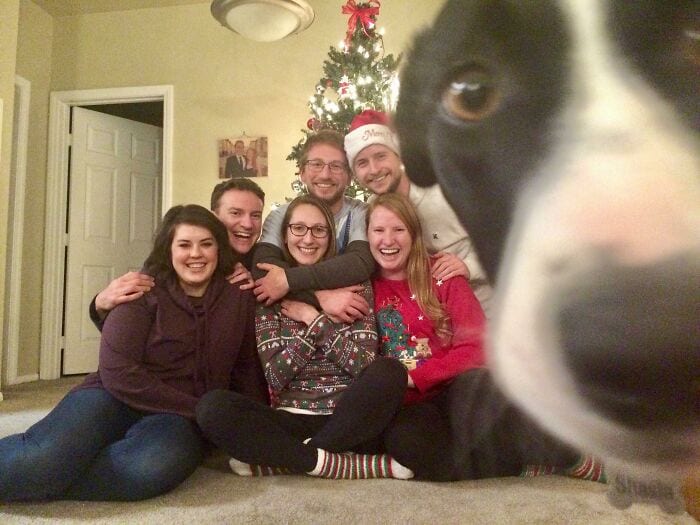

It’s that time of year where you partake in the holiday cheer and celebrate by taking family pictures, eating holiday food, and all-around enjoying yourself. You might be a dog aficionado by now, so you know exactly what you’re doing when it comes to your puppies, but even the most experienced dog lovers sometimes forget that their animals tend to feed off the energy you give off. So if you’re in a party mood, so are they.
That’s why certain Facebook groups, in this case, the Dogspotting Society, are so entertaining. Full of people from around the world celebrating their holiday cheer, this group posts pictures of dogs. That’s it. That’s their entire goal, and they do so with phenomenal swiftness and execution. Everyone in the group celebrated their holiday cheer and caught their animals doing the same.
Source: Facebook


Reuters had some solid things to say,
Many dog owners believe their pets are able to pick up on their moods, but scientists have demonstrated once and for all that man’s best friend can actually recognize emotions in humans. Researchers found that by combining information from different senses dogs form abstract mental representations of positive and negative emotional states in people.






Previous studies have shown that dogs can differentiate between human emotions from signs such as facial expressions. But this is not the same as emotional recognition, according to Dr Kun Guo, from the University of Lincoln’s School of Psychology. “This is the first empirical experiment that will show dogs can integrate visual and oratory inputs to understand or differentiate human emotion as dog emotion,”














Experiments were carried out by a team of animal behavior experts and psychologists at the University of Lincoln, UK, and University of Sao Paulo, Brazil. They presented 17 untrained domestic dogs with images and sounds conveying either positive or negative emotional expressions in humans and dogs. The dogs used in the testing were unfamiliar with the procedure; avoiding any chance of conditioning. The vocalization sound accompanying the human faces was also unfamiliar.




















“We used Portuguese to British dogs so they weren’t habituated with any words, they weren’t familiar with any words. So, we wanted to see if the dogs could assess the emotional content of the human voices and whether they would actually discriminate the emotional information within them,” explained Natalia De Souza Albuquerque, a PhD student in experimental psychology. The results, published recently in the Royal Society journal Biology Letters, found that dogs spent significantly longer looking at the facial expressions which matched the emotional state of the vocalization, for both human and canine subjects.


















“What we found is that when dogs were hearing positive sounds they would look longer to positive faces, both human and dog. And when they were listening to negative sounds they would look longer to negative, angry faces,” added De Souza Albuquerque. The study shows that dogs can integrate two different sources of sensory information into a perception of emotion in both humans and dogs. This means dogs must have a system of internal categorization of emotional states. Among animal groups, it’s a cognitive ability previously only evidenced in primates.














The researchers believe that the ability to combine emotional cues may be inherent to dogs. As a highly social species, detecting emotions in humans would have helped them in their domestication by people over the generations.
Dr Kun Guo now wants to conduct more experiments in a bid to better understand how man’s canine companions decipher human emotions. “(So) we can see whether dogs can use a human-like principle or human-like strategy to perceive, understand and respond to human emotion,” he said.
“If we can understand this, surely we can understand dogs better.”




Does your dog have a tendency to photobomb the family pictures? Do they feed off your energy as these ones did? Tell us down in the comments!